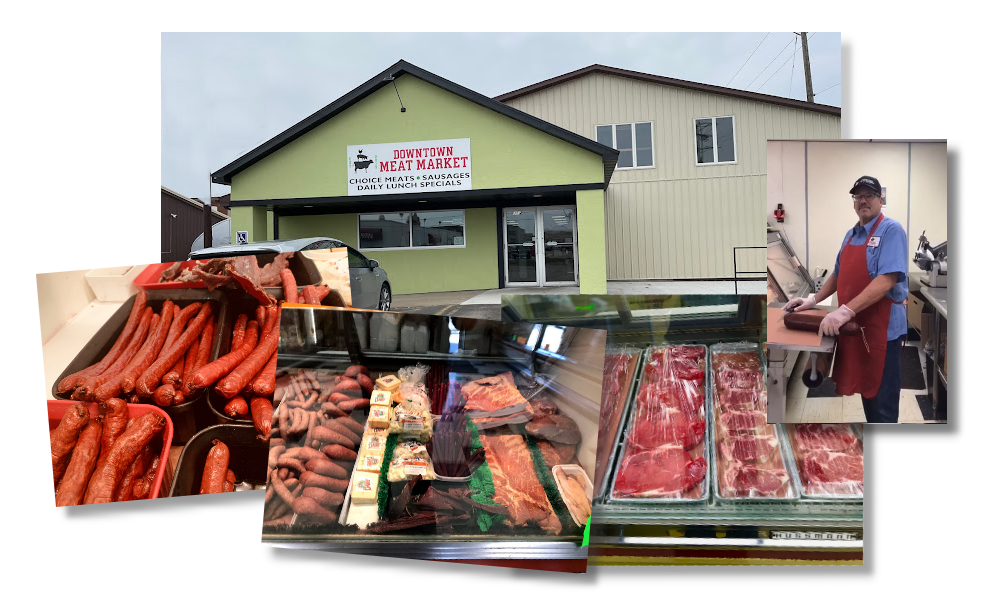Uncover the Art of the Butcher's Cut in a Modern Meat Market
In the ever-evolving landscape of modern-day meat markets, the butcher's cut has transcended its traditional origins, combining age-old workmanship with modern practices. What absolutely sets the modern butcher apart is their capacity to create a deeper connection in between consumers and the origins of their meat.
Advancement of Butchery Methods

The mid-20th century saw butchery techniques additionally fine-tuned by clinical understandings right into muscle biology and meat aging, enhancing both tenderness and taste. Advancements like vacuum cleaner product packaging and refrigeration extended product shelf-life, permitting butchers to branch out offerings and enhance quality assurance. This period additionally marked the rise of customized devices, such as band saws and meat slicers, which enhanced precision and performance in meat handling.
Computerized systems currently assist in tracking animal provenance and enhancing cuts to satisfy particular customer choices. Furthermore, a resurgence in artisanal butchery has actually emerged, mixing standard abilities with modern-day knowledge to cater to customers seeking moral and sustainable meat alternatives.

Comprehending Meat Cuts

Understanding the details of meat cuts is crucial for both butchers and customers seeking top quality and value. For butchers, precise cuts mirror skill and regard for the craft, guaranteeing minimal waste and optimum yield.
The main groups of meat cuts include primitive, sub-primal, and retail cuts. Butchers then break these down better into sub-primal cuts, prior to finally creating retail cuts readily available to consumers, like ribeye or tenderloin.
Recognizing muscle structure is crucial; muscle mass used much more regularly by the animal have a tendency to be harder and are best fit for slow-moving cooking techniques, while less-used muscle mass, like those discovered in the loin, are much more tender and perfect for grilling or roasting. Experience with these distinctions encourages consumers to make enlightened choices, improving their culinary ventures.
Selecting Top Quality Meat
Picking the ideal meat includes even more than just picking a visually attractive item from the display screen. The art of choosing high quality meat requires a critical eye and knowledge of specific features that symbolize freshness and excellence.
Second of all, think about the marbling, which refers to the white streaks of fat within the muscle. Correct marbling is a crucial indicator of inflammation and taste, as it thaws during food preparation, boosting the meat's juiciness. Bear in mind, higher marbling frequently associates with superior quality cuts, such as USDA Prime.
Structure is another useful content important element; meat needs to feel strong to the touch, not slimy or extremely soft. Additionally, bear in mind the scent. Fresh meat must have a clean, neutral odor, devoid weblink of any type of sour or off-putting odors.
Coupling Cuts With Cooking Techniques
Successfully matching cuts of meat with the ideal cooking techniques is essential for accomplishing optimum flavor and appearance. Different cuts vary in inflammation, marbling, and connective cells content, each calling for specific methods to open their possibility. Tender cuts like filet mignon and ribeye, with their inherent marbling, benefit from high-heat, quick-cooking techniques such as barbecuing or pan-searing. These approaches boost the meat's natural flavors and guarantee a juicy surface.
Conversely, tougher cuts like brisket and chuck roast are rich in collagen, which breaks down into gelatin when cooked slowly. These cuts are optimal for braising or slow-moving roasting, permitting the meat to soften with time and develop deep, complex flavors. Similarly, cuts such as short ribs and pork shoulder fare well with slow-cooking techniques, where prolonged cooking times transform their durable appearances into delicious recipes.
Lamb shanks and oxtail, which require extended food preparation to soften, are perfect prospects for stewing or slow simmering. These methods coax out rich, hearty flavors while maintaining moisture. By comprehending the one-of-a-kind characteristics of each cut, chefs and home cooks alike can raise their culinary creations, making sure each recipe is both pleasing and unforgettable.
The Butcher's Function Today
Browsing the progressing landscape of the contemporary meat market, the butcher's role today expands past plain prep work of cuts. Contemporary butchers are culinary craftsmens, teachers, and advocates for lasting practices. They link the space between the ranch and the fork by making certain honest sourcing, comprehending animal husbandry, and focusing on transparency in the supply chain. This change shows the he has a good point growing customer demand for top quality over quantity, where provenance and pet welfare are critical.
Along with crafting precise cuts, butchers currently involve directly with clients, offering cooking guidance and customizing selections to fit specific needs and preferences. Their competence in meat aging, marbling, and taste profiles equips customers to make enlightened decisions, improving their cooking experiences. This customized solution exhibits the butcher's evolving role as a relied on expert in the kitchen area.
Moreover, butchers are critical in reducing waste, utilizing whole animals to develop varied items such as sausages and stocks - bagley farms meat market edwardsville il. This extensive technique not just values the animal but also lines up with modern sustainability objectives. By doing this, the modern butcher embodies both custom and advancement, adjusting to an ever-changing market while maintaining the virtuosity and honesty of their craft

Conclusion
Mastery in understanding varied meat cuts and quality indications empowers butchers to offer informed suggestions, aligning certain cuts with optimum cooking approaches. By honoring historic practices while accepting contemporary needs, the butcher's duty stays important in today's advanced meat market.
Comments on “What Makes Bagley Farms Meat Market Edwardsville IL Attract Attention for Meat Lovers”